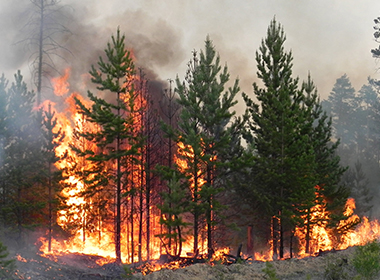DENVER – On Thursday, the Storm Prediction Center issued the first extreme fire danger warning for Western Colorado and Eastern Utah in 15 years. Unfortunately, this serves as a reminder that we are now in the height of wildfire season in Colorado and the West. People recognize that their homeowners insurance is there to provide recovery if something bad happens, but when it comes to wildfires, the prevention of damage to your home is the top priority – and that prevention is mitigation.
“For people living in wildfire-prone areas here in Colorado, mitigation is a proven method to reduce the risk to your home and property,” said Insurance Commissioner Michael Conway. “Now is the time to take what steps you can, before we get any further into this summer’s wildfire season.”
Coloradans can visit the Division of Insurance “Are You Disaster Ready?” website for more information. There they can find a video discussing the importance of wildfire mitigation, with details from the Colorado State Forest Service, the Insurance Institute for Business & Home Safety, the Rocky Mountain Insurance Association, as well as the Division. There is also information on other State and federal resources, creating home inventories, filing claims after a disaster and flood insurance (people living near wildfire burn scars are especially vulnerable to flooding for up to five years after a fire).
Here are some general tips about wildfire mitigation to get started.
- Clear a safety zone around your home and remove trees, leaves, brush and pine needles. Create a zone of at least 100 feet, but know that 200 – 500 feet is often recommended. Also remove overhanging tree branches near your home.
- Be sure propane or fuel tanks are at least 30 feet away from all structures.
- Keep the smoke detectors and fire extinguishers inside your home working properly.
- If you do not have access to a community water system or water hydrant, get a water storage tank. Make sure your garden hoses reach all areas of the property, and keep them visible and in accessible areas.
- Be sure your entrance road is accessible. Inaccessible roads can prevent fire-fighting equipment from reaching your home quickly. The street address should be easily visible from the entrance to the property so emergency responders are not delayed.
- Use fire-resistant materials in the structure of your home, especially the roof, which is most vulnerable.
In addition, the Division of Insurance encourages homeowners living in areas prone to wildfires to contact their local office of the Colorado State Forest Service. The local office can provide wildfire mitigation information particular to the area, and, if necessary, connect people to their local fire department. Find a list of the Forest Service local offices at their website – csfs.colostate.edu/areas.
Additional resources
- Colorado Property & Insurance Wildfire Preparedness Guide – a resource from the Division of Insurance, the Division of Homeland Security & Emergency Management, the Colorado State Forest Service, Colorado State Fire Chiefs, the Rocky Mountain Insurance Association and the Colorado Association of Realtors.
- Planning for Hazards: Wildfire – a resource from the Colorado Department of Local Affairs
- Colorado Division of Fire Prevention & Control – a division of the Department of Public Safety

